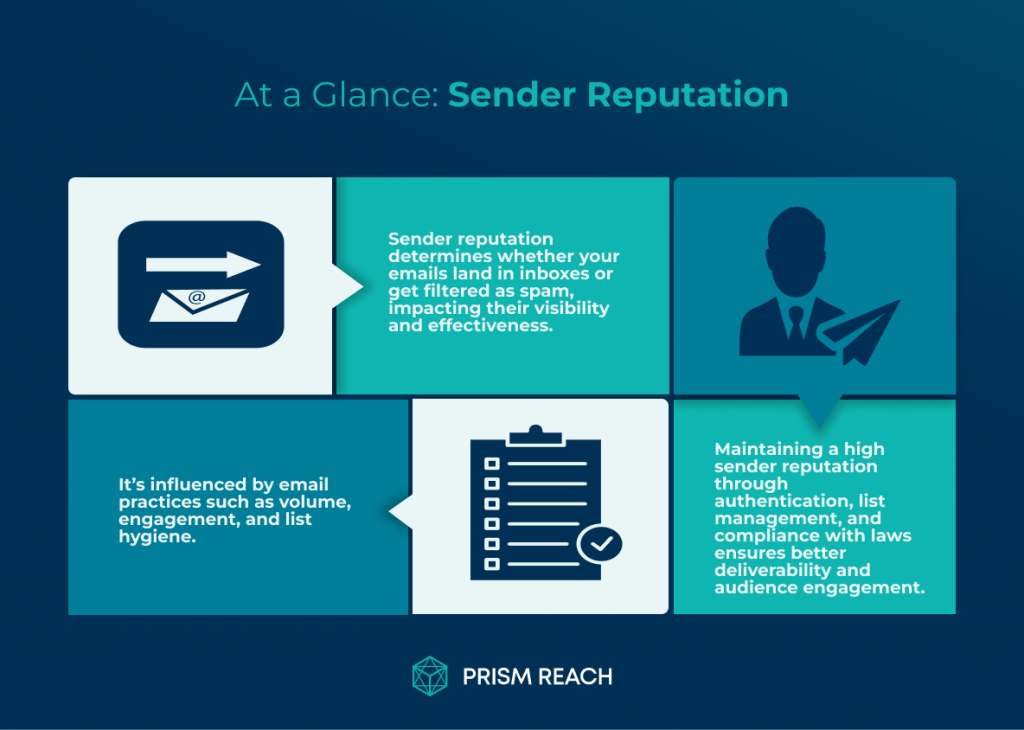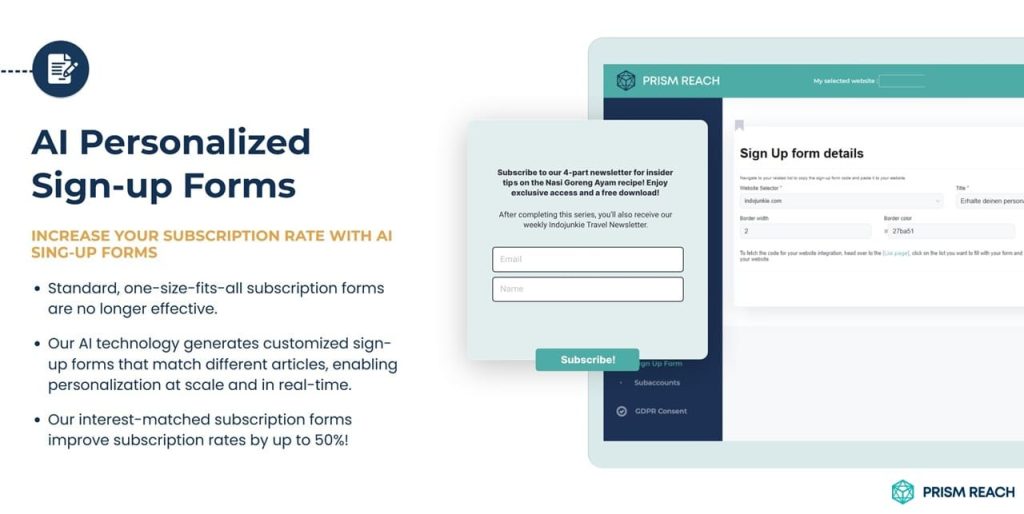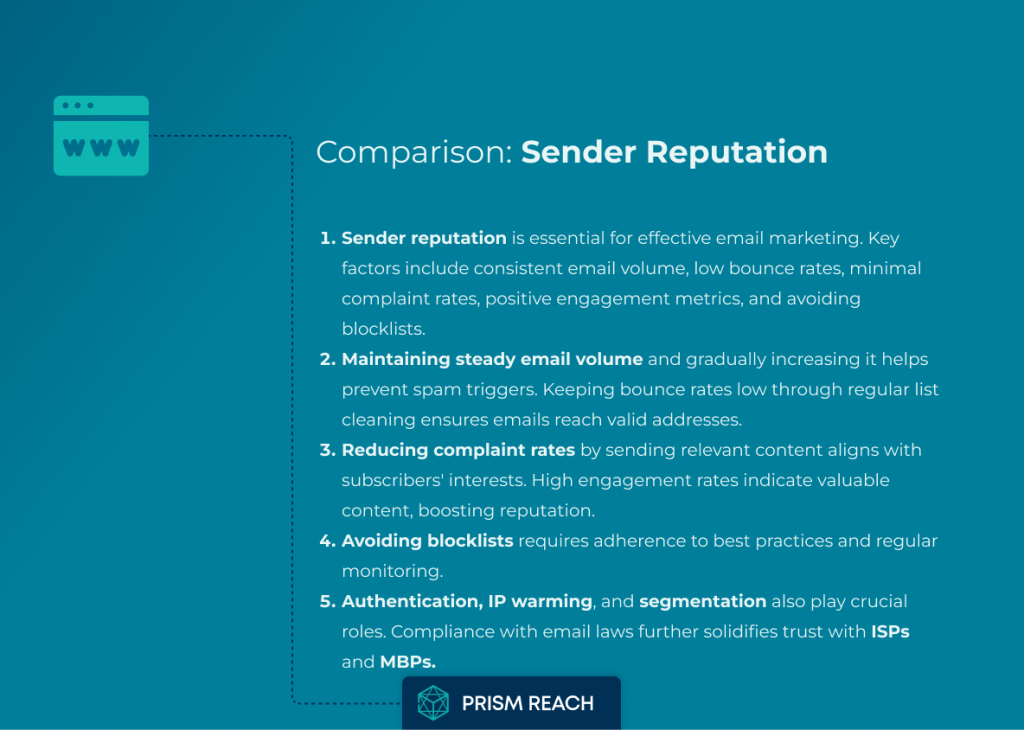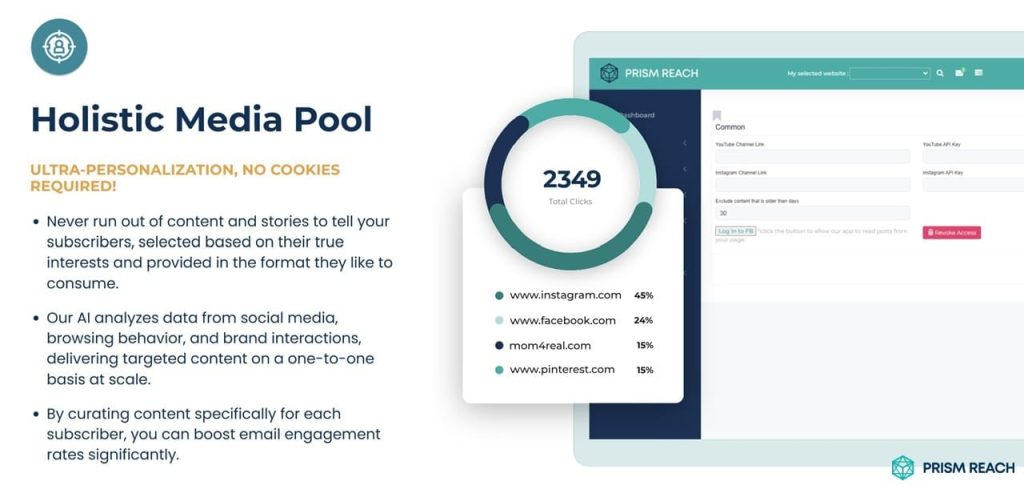In the ever-evolving landscape of digital marketing, email remains one of the most effective channels for reaching and engaging with audiences. However, the success of your email campaigns hinges not just on compelling content and eye-catching designs but significantly on your sender reputation. Sender reputation is the trust score that Internet Service Providers (ISPs) and Mailbox Providers (MBPs) assign to your sending domain and IP address based on your email sending practices and how recipients interact with your messages. A strong sender reputation ensures that your emails land in the inbox rather than the dreaded spam folder, maximizing your reach and impact.
What is Sender Reputation and Why Does it Matter?
Sender reputation is essentially a measure of your trustworthiness as an email sender. It is influenced by various factors, including your email sending practices, engagement rates, and adherence to best practices. ISPs and MBPs use sender reputation to decide whether to deliver your emails to the inbox, filter them as spam, or block them entirely. Maintaining a positive sender reputation is crucial for:
- Maximizing Deliverability: Ensures your emails reach your subscribers’ inboxes.
- Enhancing Engagement: Higher deliverability leads to increased open and click-through rates.
- Building Trust: A good sender reputation fosters trust between you and your subscribers.
Without a strong sender reputation, even the most well-crafted emails can fail to achieve their intended purpose, rendering your marketing efforts ineffective.
Upgrade Your Email Marketing with AI Personalization!
Anatomy of an Effective Sender Reputation
Understanding the components that contribute to a robust sender reputation is essential for any email marketer. Here’s an in-depth look at the key elements that make up an effective sender reputation:
1. Email Volume Consistency
Maintaining a consistent email sending volume helps ISPs recognize your sending patterns and build trust over time. Sudden spikes in email volume can raise red flags, suggesting potential spammy behavior.
- Gradual Scaling: Start with a lower volume and gradually increase it over weeks.
- Predictable Patterns: Establish regular sending schedules to create predictable patterns.
Example: If you’re launching a new product, introduce it through a series of well-timed emails rather than sending a massive blast all at once.
2. Low Bounce Rates
High bounce rates indicate poor list hygiene and can severely damage your sender reputation. Bounces occur when emails fail to reach recipients due to invalid or non-existent email addresses.
- Regular List Cleaning: Remove inactive or invalid email addresses regularly.
- Double Opt-In: Implement a double opt-in process to ensure the validity of new subscribers.
Example: Use tools like Mailgun to monitor and reduce your bounce rates effectively.
3. Low Complaint Rates
Complaint rates measure the percentage of recipients who mark your emails as spam. A high complaint rate signals to ISPs that your content is unwanted, leading to a negative sender reputation.
- Relevant Content: Ensure your emails provide value and are relevant to your audience.
- Clear Unsubscribe Options: Make it easy for recipients to opt-out if they choose.
Example: Use feedback from unsubscribe requests to understand why recipients are opting out and adjust your strategies accordingly.
4. High Engagement Metrics
Positive engagement signals, such as high open rates, click-through rates, and replies, indicate that your emails are well-received and valued by your audience.
- Compelling Subject Lines: Craft subject lines that entice recipients to open your emails.
- Personalized Content: Use personalization to make your emails more relevant and engaging.
Example: Tools like Prism Reach can help personalize your email content based on subscriber behavior and preferences.
5. Proper Authentication
Implementing email authentication protocols like SPF (Sender Policy Framework), DKIM (DomainKeys Identified Mail), and DMARC (Domain-based Message Authentication, Reporting, and Conformance) verifies your identity as a legitimate sender.
- SPF: Specifies which mail servers are authorized to send emails on behalf of your domain.
- DKIM: Adds a digital signature to your emails, ensuring they haven’t been tampered with during transit.
- DMARC: Provides instructions to ISPs on how to handle unauthenticated emails.
Example: Regularly update your SPF, DKIM, and DMARC records to align with your current sending practices and avoid authentication issues.

10 Elements to Consider for Maximum Impact in Your Sender Reputation
Building and maintaining a strong sender reputation requires a multifaceted approach. Here are ten critical elements to consider for maximizing the impact of your sender reputation:
1. Gradual Domain Warming:
Starting with a new domain? Avoid sending large volumes of emails immediately. Instead, gradually increase your sending volume over several weeks to build trust with ISPs.
- Start Small: Begin with a small batch of highly engaged recipients.
- Monitor Feedback: Keep an eye on bounce rates and complaints as you scale up.
2. Utilize Engagement Metrics for Segmentation:
Segment your email list based on how users interact with your emails, such as opens, clicks, and replies. This allows you to target engaged users more effectively.
- Behavioral Segmentation: Group subscribers based on their interaction history.
- Targeted Content: Send tailored content to different engagement segments.
3. Implement a Feedback Loop System:
Sign up for feedback loops with major ISPs to receive notifications when recipients mark your emails as spam. This enables you to take immediate action to address issues.
- Register with ISPs: Ensure you’re signed up for feedback loops with providers like Gmail, Yahoo, and Microsoft.
- Analyze Complaints: Use the feedback to identify and rectify problematic areas in your email campaigns.
Example: Setting up a feedback loop with Gmail can help you promptly remove users who mark your emails as spam.
4. Optimize Send Times Based on Engagement:
Analyze your historical data to determine when your audience is most likely to engage with your emails. Sending emails at optimal times can significantly boost open and click-through rates.
- Data Analysis: Use analytics tools to identify peak engagement times.
- Automated Scheduling: Utilize email marketing platforms that can automate send times based on engagement patterns.
5. Use Personalized Subject Lines Strategically:
Personalize your subject lines with dynamic fields like the recipient’s name or location. However, use personalization sparingly to avoid appearing spammy.
- Dynamic Fields: Incorporate subscriber-specific information for a personalized touch.
- A/B Testing: Test different levels of personalization to find the optimal balance.
6. Regularly Conduct Deliverability Audits:
Perform routine audits of your email deliverability metrics, including bounce rates, open rates, and spam complaints. This helps identify and address issues before they escalate.
- Use Deliverability Tools: Leverage tools like Folderly or Mailgun to monitor your deliverability.
- Actionable Insights: Use the data from audits to refine your email strategies.

7. Create a Friendly “From” Name:
Use a personable and recognizable “from” name that resonates with your audience instead of a generic company name. A friendly “from” name can increase open rates and reduce spam complaints.
- Human Touch: Incorporate a real name or a familiar team name.
- Brand Alignment: Ensure the “from” name aligns with your brand identity.
Example: Instead of “ABC Company,” use “John from ABC Company” to add a personal touch.
8. Engage with Inactive Subscribers:
Develop targeted campaigns to re-engage inactive subscribers before removing them from your list. This can help improve overall engagement metrics and protect your sender reputation.
- Re-Engagement Campaigns: Send specialized emails to inactive users with incentives to re-engage.
- Segmentation: Identify and segment inactive subscribers for targeted outreach.
Example: Offer a special discount or exclusive content to encourage inactive subscribers to interact again.
9. Use Spam Trigger Word Monitoring Tools:
Implement tools that analyze your email content for spam trigger words before sending campaigns. This proactive approach reduces the likelihood of your emails being flagged as spam.
- Content Analysis: Use tools like WordStream or MailMonitor to scan your emails for potential spam triggers.
- Content Optimization: Adjust your language and phrasing based on the tool’s recommendations to improve deliverability.
10. Regularly Update Authentication Protocols:
Ensure that your SPF, DKIM, and DMARC records are regularly updated and correctly configured. Proper authentication helps establish credibility with ISPs, improving sender reputation over time.
- Continuous Monitoring: Regularly check your authentication records to ensure they are up-to-date.
- Best Practices: Stay informed about the latest authentication protocols and implement them accordingly.
Example: Periodically review your SPF records to include any new mail servers you use for sending emails.

Advanced Sender Reputation Strategies: Hidden Gems
While the foundational elements of sender reputation are essential, integrating advanced strategies can significantly enhance its effectiveness. Here are five “hidden gems” strategies that are not widely recognized but can transform your sender reputation management:
1. Gradual Domain Warming
- Strategy: Instead of sending a large volume of emails from a new domain, gradually increase the sending volume over several weeks. This approach helps build trust with ISPs and establishes a positive sender reputation without triggering spam filters.
- Effectiveness: Gradual domain warming allows ISPs to observe consistent sending patterns, which is critical for building trust and ensuring high deliverability rates.
- Obscurity: Many marketers overlook this step, believing they can start with high volumes immediately. This oversight can lead to poor deliverability and damage to the sender reputation.
- Ease of Implementation: Requires careful planning and monitoring but is straightforward to execute using most email marketing platforms.
- Uniqueness: While domain warming is a known practice, the methodical, gradual approach is often underutilized, making it a unique and highly effective strategy.
2. Utilize Engagement Metrics for Segmentation
- Strategy: Segment your email list based on engagement metrics such as opens, clicks, and replies, rather than relying solely on demographics. This allows for more targeted and effective email campaigns.
- Effectiveness: Targeting engaged users can improve overall engagement rates and positively impact sender reputation by ensuring that your emails are reaching a receptive audience.
- Obscurity: Many marketers still rely heavily on demographic segmentation alone, missing out on the benefits of behavior-based segmentation.
- Ease of Implementation: Requires initial setup but can be automated with most advanced email marketing tools, including Prism Reach.
- Uniqueness: Engagement-based segmentation is less common than traditional methods, providing a competitive edge in targeting and personalization.
3. Implement a Feedback Loop System
- Strategy: Sign up for feedback loops with major ISPs to receive notifications when recipients mark your emails as spam. This proactive approach allows you to address issues promptly and maintain a good sender reputation.
- Effectiveness: Receiving real-time feedback on spam complaints enables immediate action to remove dissatisfied subscribers, thereby reducing complaint rates and protecting your reputation.
- Obscurity: Many marketers are unaware of how to set up or utilize feedback loops effectively, leading to missed opportunities for reputation management.
- Ease of Implementation: Requires some technical setup but is manageable for most email marketers with the right tools and knowledge.
- Uniqueness: Feedback loops are underused despite their potential for proactive reputation management, making them a hidden gem for savvy marketers.
4. Optimize Send Times Based on Engagement
- Strategy: Analyze historical data to determine the best times to send emails based on when your audience is most engaged. Utilize this information to schedule your campaigns for maximum impact.
- Effectiveness: Sending emails at times when your audience is most active can significantly increase open rates and engagement, thereby enhancing your sender reputation.
- Obscurity: While send time optimization exists, few marketers leverage it based on specific engagement data tailored to their unique audience.
- Ease of Implementation: Requires data analysis but can be automated with advanced email marketing tools like Prism Reach, which offer predictive analytics for optimal send times.
- Uniqueness: This strategy tailors send times specifically to your audience’s behavior rather than relying on generic best practices, offering a personalized approach to email scheduling.
5. Use Personalized Subject Lines Strategically
- Strategy: Personalize subject lines using dynamic fields like the recipient’s name or location. However, use personalization sparingly to avoid appearing spammy and to maintain authenticity.
- Effectiveness: Personalized subject lines can significantly boost open rates and engagement, positively impacting your sender reputation by demonstrating relevance and personalization.
- Obscurity: Many marketers use personalization but may not fully realize its specific impact on sender reputation or use it strategically.
- Ease of Implementation: Most email platforms support dynamic fields, making this easy to implement with minimal effort.
- Uniqueness: While personalization in subject lines is common, the strategic sparing use is less frequently discussed, providing a nuanced approach to enhancing open rates without overdoing it.

6. Regularly Conduct Deliverability Audits
- Strategy: Perform regular audits of your email deliverability metrics, including bounce rates, open rates, and spam complaints. Use these audits to identify and address issues before they escalate.
- Effectiveness: Identifying issues early allows for timely adjustments that can protect and improve sender reputation, ensuring consistent deliverability.
- Obscurity: Many marketers neglect systematic audits in favor of ad-hoc checks or rely solely on overall performance metrics, missing out on granular insights.
- Ease of Implementation: Requires some time investment but can be integrated into regular marketing workflows using tools like Prism Reach for automated reporting.
- Uniqueness: While audits are known, their frequency and depth are often insufficient in many organizations, making thorough, regular audits a distinctive and highly effective practice.
7. Create a Friendly “From” Name
Strategy: Use a friendly and recognizable “from” name that resonates with your audience rather than just a company name or generic address. This personable approach can increase open rates and reduce spam complaints.
- Human Touch: Incorporate a real name or a familiar team name to add a personal connection.
- Consistency: Use the same “from” name across all communications to build recognition.
Example: Instead of “ABC Company,” use “John from ABC Company” to add a personal touch and foster a stronger connection with recipients.
8. Engage with Inactive Subscribers
Strategy: Develop targeted campaigns specifically aimed at re-engaging inactive subscribers before removing them from your list entirely. This can help boost overall engagement metrics and protect your sender reputation during the process.
- Re-Engagement Emails: Send specialized emails offering incentives or asking for feedback to reignite interest.
- Segmented Lists: Identify and segment inactive users for more focused outreach.
Example: Offer a special discount or exclusive content to encourage inactive subscribers to re-engage with your emails.
9. Use Spam Trigger Word Monitoring Tools:
Strategy: Implement tools that analyze your email content for spam trigger words before sending campaigns. Reducing the use of these words can decrease the likelihood of your emails being flagged as spam by filters.
- Content Scanning: Use tools like WordStream or MailMonitor to scan and optimize your email content.
- Language Refinement: Adjust your language and phrasing based on the tool’s recommendations to improve deliverability.
Example: Before sending a promotional email, run it through a spam checker to identify and remove potential trigger words like “free,” “guarantee,” or “act now.”
10. Regularly Update Authentication Protocols
Strategy: Ensure that SPF, DKIM, and DMARC records are regularly updated and correctly configured. Proper authentication helps establish credibility with ISPs, improving sender reputation over time.
- Continuous Monitoring: Regularly check and update your authentication records to reflect any changes in your email infrastructure.
- Best Practices: Stay informed about the latest authentication protocols and implement them accordingly to maintain compliance and security.
Example: Periodically review your SPF records to include any new mail servers you use for sending emails, ensuring that all legitimate sources are authorized.
Jumpstart Your Email Strategy with Prism Reach
Maintaining and enhancing your sender reputation requires diligent effort and the right tools. This is where Prism Reach comes into play. Prism Reach is an innovative AI-powered SaaS solution designed to enhance the effectiveness of email marketing campaigns through deep personalization and automation. By leveraging Prism Reach, you can streamline your email marketing processes, ensure high deliverability rates, and maintain a stellar sender reputation.
Key Benefits of Prism Reach
- AI-Powered Personalization: Prism Reach utilizes sophisticated AI algorithms to create detailed user avatars based on subscriber behavior and preferences. This enables the creation of highly personalized email content that resonates with each individual recipient.
- Dynamic Content Selection: The platform’s ability to dynamically select and tailor content based on real-time data ensures that your emails are always relevant and engaging to your audience.
- Performance Monitoring: Prism Reach provides robust tracking tools to monitor the effectiveness of your email campaigns, including open rates, click-through rates, and engagement metrics. This data-driven approach allows for continuous optimization and improvement of your email strategies.

Prism Reach’s Features Enhancing Sender Reputation
- Content Clustering: Groups website content and social media posts into relevant categories, enabling targeted messaging in your emails.
- User Avatars: Creates personalized profiles for each subscriber, ensuring that email content can be tailored to individual preferences and behaviors.
- AI-Generated CTAs: Automatically generates and updates CTAs in your emails based on subscriber interactions and seasonal trends, enhancing engagement and deliverability.
How Prism Reach Enhances Your Email Marketing
By leveraging Prism Reach, businesses can transform their email marketing efforts from basic communication tools into dynamic, personalized experiences that drive engagement and maintain a strong sender reputation. Here’s how Prism Reach can elevate your email marketing strategy:
- Personalized Content: Prism Reach analyzes subscriber data to deliver personalized content that aligns with individual preferences, increasing engagement and reducing spam complaints.
- Automated Campaigns: Automate your email campaigns with intelligent scheduling and content curation, ensuring timely and relevant communication with your audience.
- Real-Time Monitoring: Keep a close eye on your sender reputation with real-time monitoring tools that alert you to any potential issues, allowing you to take proactive measures.
Upgrade Your Email Marketing with AI Personalization!
Conclusion
Sender reputation is the linchpin of successful email marketing. It determines whether your carefully crafted messages reach your audience or get lost in spam filters. By understanding and implementing best practices—such as maintaining consistent email volumes, ensuring low bounce and complaint rates, fostering high engagement, and utilizing proper authentication protocols—you can build and maintain a strong sender reputation. Additionally, integrating advanced strategies like gradual domain warming, engagement-based segmentation, and strategic personalization can further enhance your email deliverability and effectiveness.
Leveraging tools like Prism Reach can simplify this process, providing AI-driven insights and automation to ensure your email campaigns are both effective and reputable. By prioritizing your sender reputation and utilizing the right tools and strategies, you can unlock the full potential of your email marketing efforts, fostering lasting relationships with your subscribers and driving tangible business results.
Embrace the importance of sender reputation and take proactive steps to nurture it. With dedication, the right strategies, and powerful tools like Prism Reach, your email marketing campaigns can achieve unprecedented success.
Sources
- Mailgun Blog: Improve Sender Reputation
- MailReach Blog: Email Sender Reputation
- Folderly Blog: Email Sender Reputation
- SmartBug Media: Optimizing Email Sender Reputation
- Instantly AI: Sender Reputation